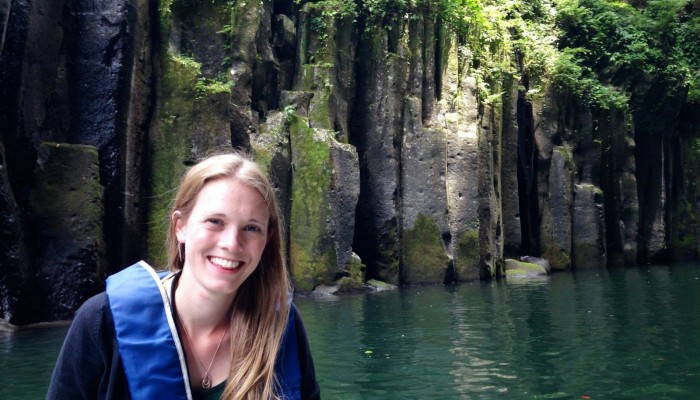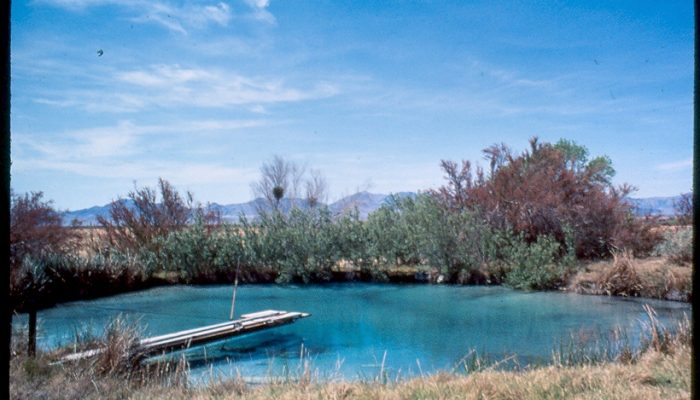A significant way that geologists contribute to international development is through their work on natural hazards (e.g., earthquakes, landslides, volcanic eruptions) and subsequent contribution to disaster risk reduction (DRR). As such we’re delighted to welcome Clare Sweeney to our blog team – to write specifically about all things hazard and disaster. Clare is a recent graduate of B ...[Read More]
Green Tea and Velociraptors
They might be giants, but how could they live with each other?
Sauropod dinosaurs are the biggest animals to have ever walked on land. They are instantly recognised by their long, sweeping necks and whiplashed tails, and nearly always portrayed moving in herds, being stalked by hungry predators. In recent years, a huge amount of taxonomic effort from scientists has vastly increased the number of known species of sauropod. What we now know is that in many area ...[Read More]
VolcanicDegassing
Villarrica erupts. March 3, 2015, Chile.
Villarrica (Ruka Pillan in Mapudungun) is one of the most active volcanoes of southern Chile, and is a popular tourist destination in the heart of the Chilean Lake district. Villarrica has been in a continuous state of steady degassing for much of the past 30 years, since the last eruption in 1984-5, and began showing signs of increased unrest (seismicity, and visible activity in the summit ...[Read More]
Geology for Global Development
HFA2: Understanding hazards or disasters
From 14-18th March, disaster professionals, politicians, UN representatives and many other stakeholders will be gathering in Sendai (Japan) at the UN World Conference on Disaster Risk Reduction. The aim of the meeting will be to agree upon the final text to replace the Hyogo Framework for Action, the UN guidelines for action on disaster risk reduction and strengthening resilience. At our first ann ...[Read More]
Geology for Global Development
EGU15 – GfGD Events and Information
Green Tea and Velociraptors
The early evolution of birds – more complicated than trying to untangle your headphones..
Birds are a phenomenal story of evolutionary success. As modern-day dinosaur descendants, they occupy almost all environments and ecosystems around the globe, and are truly animals that capture our imaginations. However, how did they become so diverse, both in number and form? This is something only the fossil record can divine for us. Birds first appear in the Middle to Late Jurassic of China and ...[Read More]
VolcanicDegassing
Landslides, lake tsunamis and the tragedy of Lago Cabrera
Fifty years ago, on 19th February 1965, a rock and ice landslide fell from the summit face of Volcan Yate in southern Chile. It was mid-summer, and was one of the warmest and wettest February records in that part of Chile on record. The debris slid rapidly down a narrow gully, losing at least 1500 metres in elevation, until it emerged into the southern end of a small montane lake. This triggered a ...[Read More]
Green Tea and Velociraptors
Palaeontology in the 21st Century
Palaeontology is the study of the history of life on Earth. Whenever I get asked what I do, my answer always gets a predictable response: either “Oh, like Ross from Friends?” “So Jurassic Park?” or “So you dig dinosaurs?” Neither of these are close to what myself, my colleagues, or the broader field are doing. Well, apart from the digging dinos. We have to have some perks (not that I’ve actually e ...[Read More]
Green Tea and Velociraptors
A letter to the Editor of the Zoological Journal of the Linnean Society
This post is one inspired by the actions of Ethan White and a couple of other ecologists. Spurred on by their actions, I decided to write a letter to the Editor of a major journal in my field, the Zoological Journal of the Linnean Society. Ethan has performed similar actions too, and this letter draws quite a bit on what he has previously written. The theme revolves around requesting that the Linn ...[Read More]
WaterUnderground
The Groundwater Wetlands and Bogs Study Group
The Groundwater Wetlands and Blogs Study Group is an unfunded, voluntary collaboration of professionals, formed in December 2012, focused on groundwater wetlands, bogs, and related systems. The Study Group has about 250 members in 39 countries. Study Group members communicate primarily through a disciplined Yahoo Group listserve. We are not a social network nor are we an environmental advocacy g ...[Read More]


